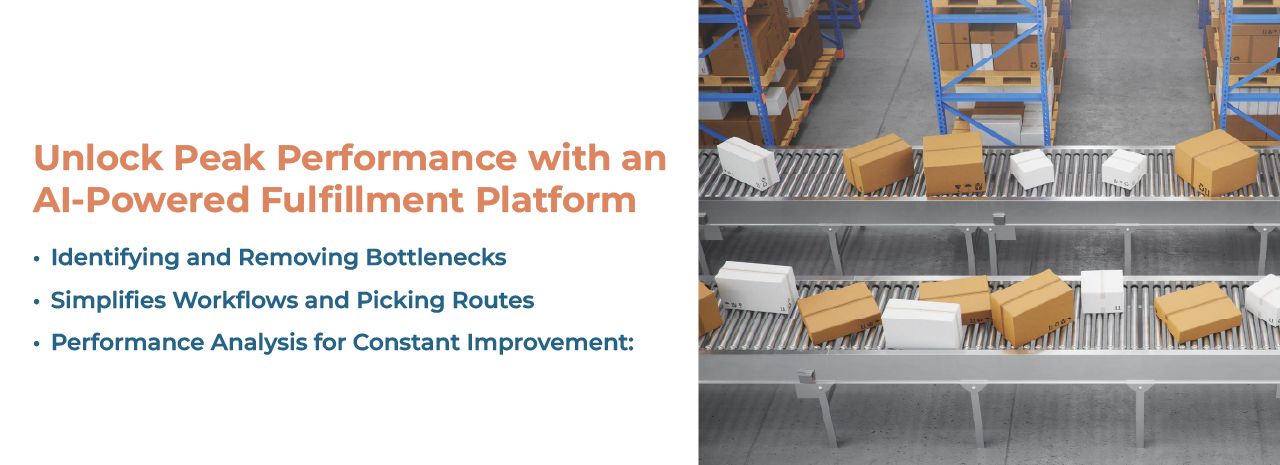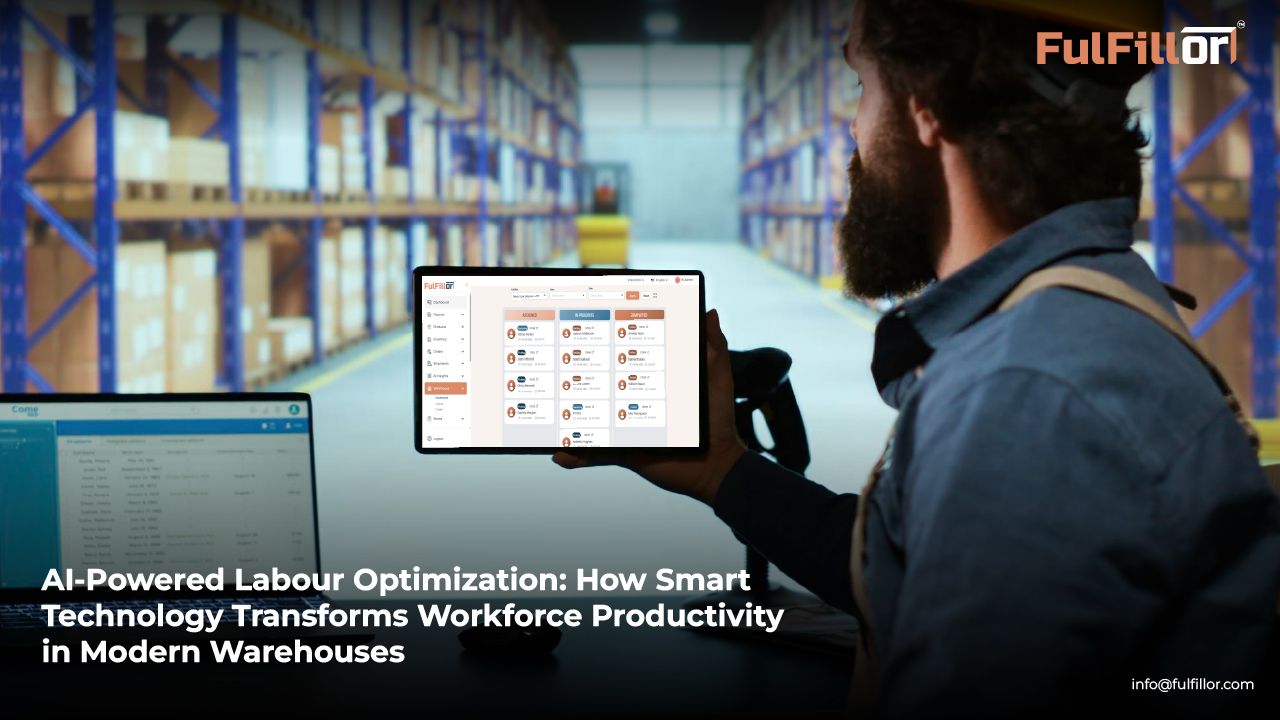AI-Powered Labour Optimization: How Smart Technology Transforms Workforce Productivity in Modern Warehouses
Labor shortages are one of the central and persistent challenges across logistics and warehousing. With an aging workforce, high employee turnover, and ever-rising consumer expectations, fulfillment centers face relentless pressure to provide faster, more reliable deliveries, and that too at lower costs. E-commerce leaders like Amazon have standardized the same-day delivery concept, making it difficult for new-age warehouses to keep up with the ever-changing customer expectations and stay ahead in the dynamic and competitive business world.
These challenges make warehouse labor optimization software and AI-driven workforce planning increasingly essential for operational resilience.
Unfortunately, conventional solutions like mass hiring, dependence on overtime, or wage hikes would ideally not be able to solve the problem; rather, the issue may escalate. Additionally, they increase operational and labor costs, impact profitability, and lead to customer dissatisfaction without addressing the root cause, which is inefficiency.
Without modern labor management systems, these outdated approaches only add complexity instead of improving warehouse productivity. This is where AI comes in and brings innovation, efficiency, and so much more. By automating and simplifying intricate and tedious workflows and analyzing crucial logistics and warehouse data, AI empowers businesses to optimize labor allocation, enhance workforce productivity, maintain performance levels, and create a workforce that can thrive even amid persistent labor shortages.
AI-powered labor forecasting and real-time workforce analytics give warehouses the accuracy and visibility needed to stay competitive.
The Growing Strain of Labor Shortages in Modern Warehouses
Before identifying how AI can redefine labor allocation, it’s essential to understand why labor shortages have become such a stubborn obstacle and the cascading impact it brings across every phase of warehouse functions. Beyond hiring complexities, labor shortages become a critical issue due to several factors:

-
An aging workforce and changing demographics: As older and experienced workers retire, young workers are less likely to enter the industry. The next gen of professionals prefers comfort, flexibility, and better work-life balance, making it challenging for warehouses to fill positions with the right talent.
-
Consistently Changing Workers' Expectations: Employees today expect more flexibility, safer work environments, and modern tools that can make their jobs easier and more meaningful. Yet many warehouses still lack these tools, making it difficult to meet the demands of a tech-savvy Gen Z workforce.
-
Increasing Turnover Rates and High Competition for Talent: Warehouse and logistics jobs often require long hours and are physically intense. According to various reports, employees in this sector log the longest workdays, averaging 9 hours or more, longer than the typical workday across other industries. Nearly one in five workers is overutilized, and 15% are already at high risk of burnout.
AI-Driven Labor Optimization: Reinventing Workforce Management in Warehousing
Fulfillment companies have long tried to cope with the costs of understaffing and labor inefficiencies with short-term solutions like overtime pay or wage hikes. However, these short-term fixes can provide momentary relief but fail to address the root of the system: warehouse labor shortages.
AI is reinventing how warehouses handle their workforce. Rather than solving labor shortages at the root of it, AI-driven labor optimization in warehouses is an effective strategy that helps reduce their impact of smaller teams by offering greater control over warehouse operations through smart automation, real-time data analysis, and enhanced decision-making.
How AI Supports Smart Labor Allocation in Warehouses
AI is often attached to automation; however, it goes way beyond automation. Artificial Intelligence largely encourages intelligent labor allocation by automating complex tasks, forecasting future staffing needs, making real-time adjustments, balancing workloads, skill-based task matching, and more. Here’s how AI is reinventing workforce transformation:
1. Predictive Analytics for Accurate Labor Forecasting
A predictive analytics warehouse management system helps warehouse managers predict labor needs and plan staffing effectively. The system is used to analyze historical order data, seasonal trends, and promotional patterns, avoiding overstaffing and labor shortages while ensuring smooth operational efficiency.
2. Real-Time Workforce Scheduling and Labour Reallocation
AI is capable of handling workforce fluctuations. They can instantly relocate labor resources, especially during unexpected demand surges or slowdowns, to maintain workflow balance, ensuring uninterrupted operations even under changing conditions.
3. Skill-Based Task Assignment and Smarter Workforce Utilization
AI ensures assigning the right task to the right talent and at the right time. It examines workers’ skills, certifications, and current workload. This robust assigning of tasks helps boost performance and accuracy, minimize errors, and also improves workers’ satisfaction.
Unlock Peak Performance with an AI-Powered Fulfillment Platform
Other than automating and allocating labor, an AI-powered fulfillment platform like Fulfillor helps achieve peak performance:

-
Identifying and Removing Bottlenecks: AI constantly monitors performance, further helping pinpoint inefficiencies or potential bottlenecks before they escalate or turn into complex challenges. Managers can then take effective steps to maintain smooth and uninterrupted workflows.
-
Simplifies Workflows and Picking Routes: AI analyzes real-time operational data to recommend the most efficient routes and processes for picking, packing, sorting, and other warehouse activities. This not only enhances labor productivity but also improves overall warehouse efficiency, aligning with labor standards.
-
Performance Analysis for Constant Improvement: AI delivers clear, data-driven visibility into workforce performance. These insights enable supervisors to identify skill gaps, tailor training programs, and train employees effectively, fostering a culture of continuous improvement rather than reactive management.
Future-Proof Your Warehouse with AI-Driven Labour Optimization Technology
The warehouse and logistics industry is evolving faster than you ever thought, strained by an aging workforce, increasing operational costs, and rising customer expectations. To stay agile and competitive, businesses need much more than a standard warehouse management system; they need an AI-powered platform that helps brands scale faster, more reliably, and securely.
Modern warehouses are increasingly adopting AI-driven labour optimization software to improve productivity, reduce operational waste, and enhance real-time workforce visibility. Fulfillor is an advanced AI-enriched WMS solution that helps warehouses scale, adapt, and achieve efficient and resilient performance effortlessly through smart labor allocation, aligning tedious fulfillment activities, and monitoring performance to ensure continuous improvements.
With built-in labour forecasting, real-time workforce analytics, and seamless integration with 3PL warehouse management systems, Fulfillor provides measurable improvements in throughput and labour cost reduction. Ready to secure your warehouse from labor shortages? Schedule a demo for Fulfillor, a robust and AI-driven fulfillment platform that supports smart labor optimization!
Warehouses using AI-powered labor management tools often report 15–25% gains in efficiency, making AI adoption a strategic advantage rather than a technological upgrade

